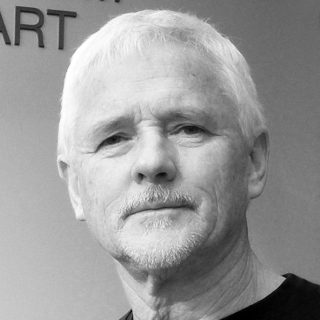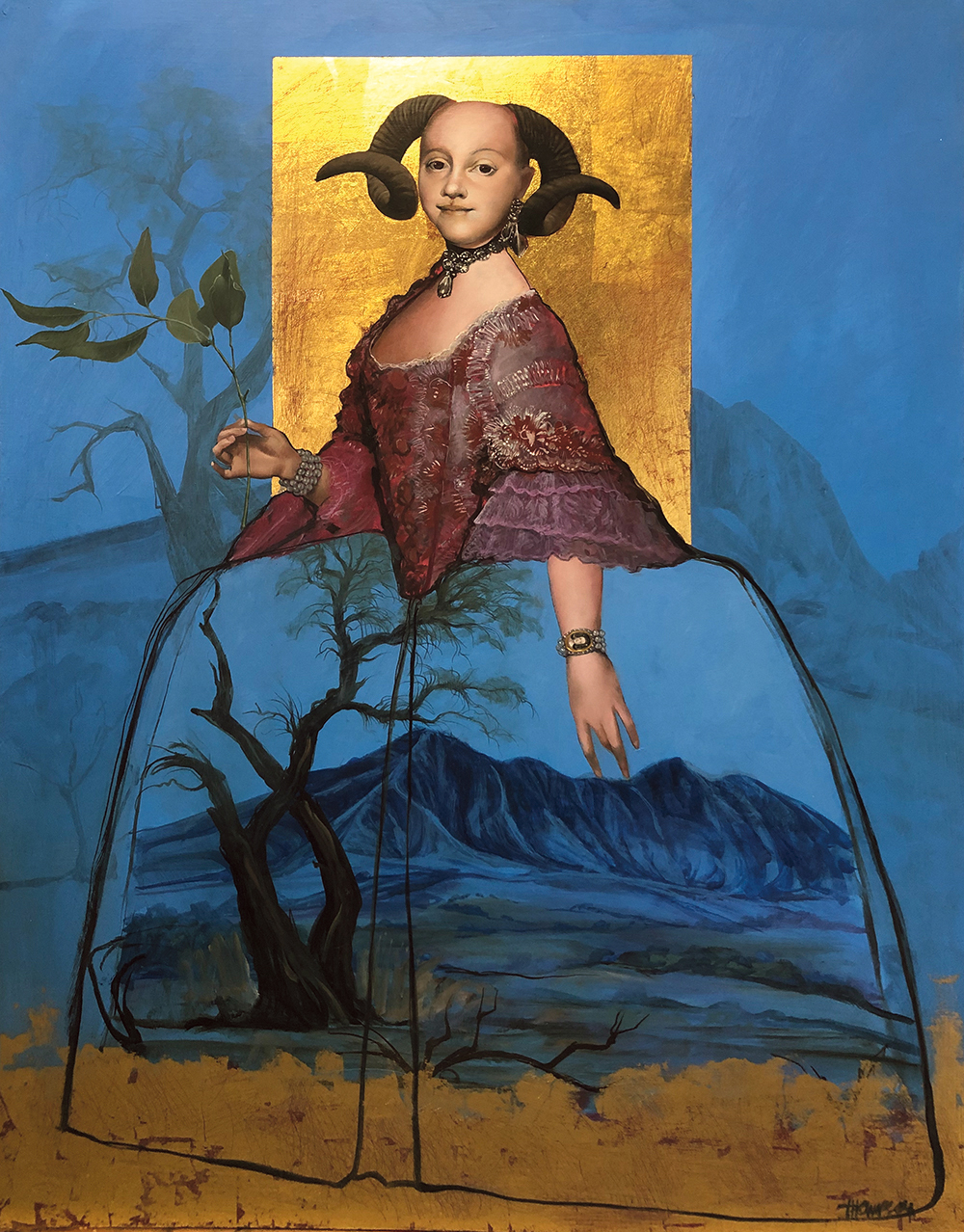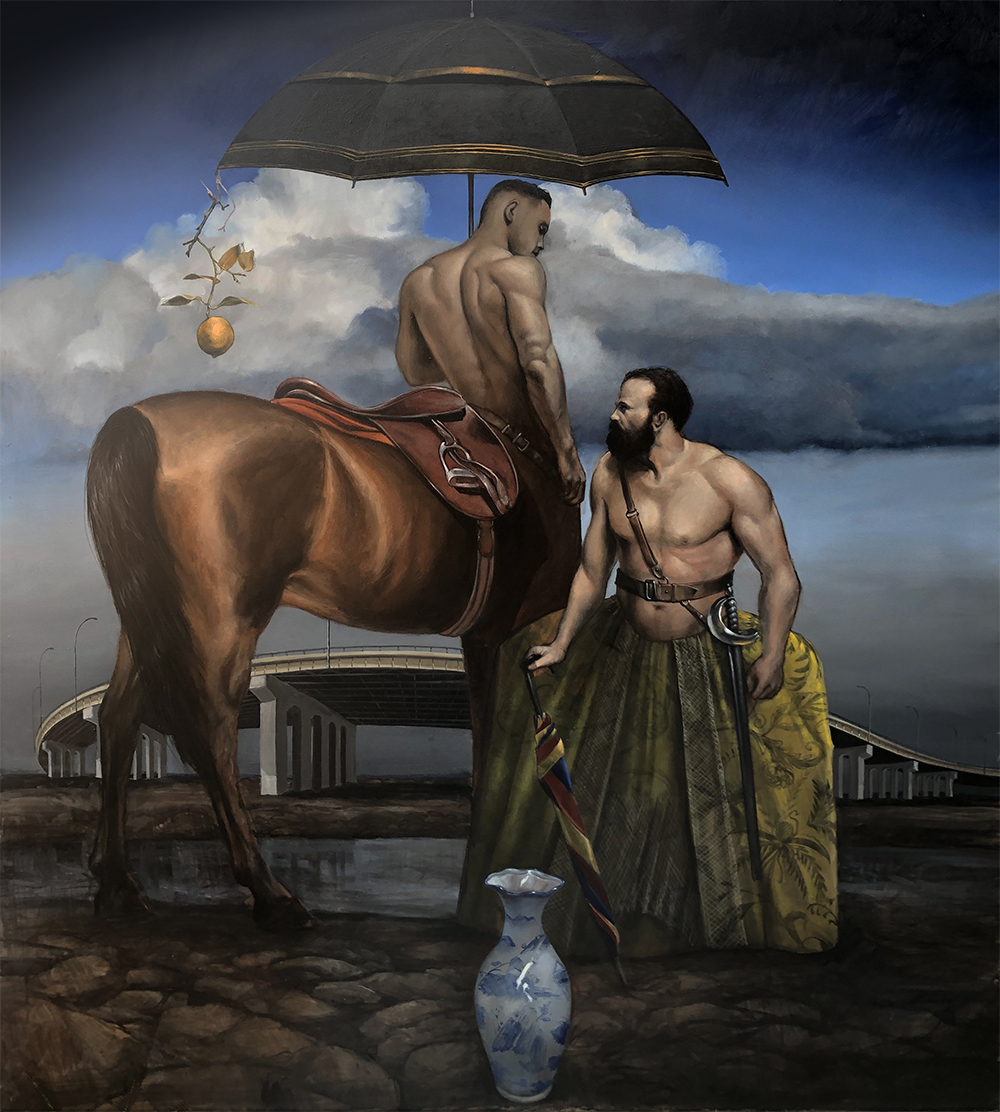
John Neylon
John Neylon is an award-winning art critic and the author of several books on South Australian artists including Hans Heysen: Into The Light (2004), Aldo Iacobelli: I love painting (2006), and Robert Hannaford: Natural Eye (2007).

Mark Thompson’s Adelaide Festival showing at BMG Art is a great reminder of how much fun art can be.
I once suggested that the city would be much improved by a Mark Thompson sculpture in a very public place – preferably a naughty one with lots of gold and spangly bits. Perhaps an outsized phallic submarine would do the trick. Thank god this master of the revels turns up on our doorstep every Festival to remind us of what fun art used to be before it became respectable.
That Thompson is one of Australia’s leading theatre designers may give him a licence, in the public mind, to celebrate excess and delight in spectacle. “Everything,” Thompson says, “is grist for the mill and nothing is sacred or off limits.” Appropriating and extrapolating form is essential “to provide many reference points for an audience”. He says, “All images are meant to provoke in the viewer a memory of the familiar. That is, they look as if they are old but the otherness of the overlaid idea has nothing to do with the original.”
The key concept here is all about originality. Nothing in Thompson’s viewfinder is totally ‘original’. He sees this as a kind of freedom “to plough through the wonder years of moments such as the Pre-Raphaelites, 18thcentury pastel portraits, to research every nuanced portrait by Singer Sargent, to build on a fascination for Chinoiserie and then to discover Turquerie and Orientalism”. The bonus is that Thompson’s time-tunnel trawling may open a door for many who have a passion for art but have been starved of its hedonistic pleasures, or nagged by guilt that ‘decorative art’ or artistic indulgence isn’t helping to save the world.
In this current exhibition Thompson has arrived at the BMG Art staging post with a fresh team of horses and a wagonload of new ideas. There’s no dodging the skulls. They have been the backbeat for Thompson’s signature tunes for as far back as I can remember. The artist has his own unique take on this. “Like most males I still think as a youth… Yet it is tempered with a knowledge that it all ends, often a lot sooner than anticipated.”

Velázquez is referenced in the well-known motif of an aristocratic young woman (as made famous by his Infantas) perched on top of a panniered skirt. Thompson professes an admiration for the artist’s use of the paint medium (“incredibly fluid and rough”) but clearly the sculptural form of the dress and the studied insouciance of the wearer has tickled his fancy. Into the Velázquez vortex are drawn other artists, some the artist has discovered while researching designs for costumes and sets.
An example is the German mid–18th century Rococo artist, Anton Mengs, whose painting of La Marquesa de Llano is substantially quoted in one of Thompson’s paintings and referenced in works’ titles. The skull in her hand is all Thompson (the Mengs portrait had her holding a mask). Keep in mind that Thompson says that he has always been a bit of a bowerbird, so don’t go looking for meaning when the artist may be simply inviting you to surrender to the image and go from there.
This tactic applies particularly when reading Thompson’s rendering of the elaborately wide dresses as see-through framing devices for MacDonnell Ranges landscapes incorporating strong Namatjira references. It helps to know that Thompson has close childhood and adolescence connections with Alice Springs and the surrounding region and with Aboriginal communities and artists. To peer through an 18th century aristocrat’s dress at a view of Mount Sonder rendered in Namatjira watercolour style is beyond rational explication. But no more than most of the other capriccios – the frocked-up centaurs, commedia dell’arte riffs, variously crowned sconces and one of the oddest Gardens of Eden you’ve ever seen. It’s titled The Peeper from Veronese’s Villa Barbaro. The girl peeping around an archway corner is directly quoting one of the most endearing motifs in Veronese’s sumptuous frescoes undertaken, as a commission, by the artist in 1560.
The two other figures must surely be Adam and Eve. But with Eve holding what may be a birch rod (ok so it’s a perch for the raven) the relationship between the two can only be guessed at. And that’s theatre – leave some spaces for the audience to fill with its own ideas.
Thompson’s imagery doesn’t seek the liquidity of a Dali or the obsidian exactness of a Magritte. It has more the quality of scenarios composed of stage flat units placed one in front of the other or costumed dummies created using the ‘what if’ principle.
The working principle appears to be whatever captures the artist’s mind at the time, which might be a particular technique, the thrill of discovering a ‘forgotten’ artist, a fabulous story, the whimsical and profound, or, simply, patterned, bright, shiny things. Keep this in mind and you’ll enter into the spirit of the show and won’t want to leave at half time. Remember, as Jean- Luc Godard said, “Sometimes reality is too complex. Stories give it form.”

John Neylon is an award-winning art critic and the author of several books on South Australian artists including Hans Heysen: Into The Light (2004), Aldo Iacobelli: I love painting (2006), and Robert Hannaford: Natural Eye (2007).